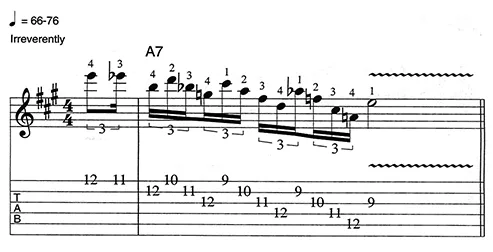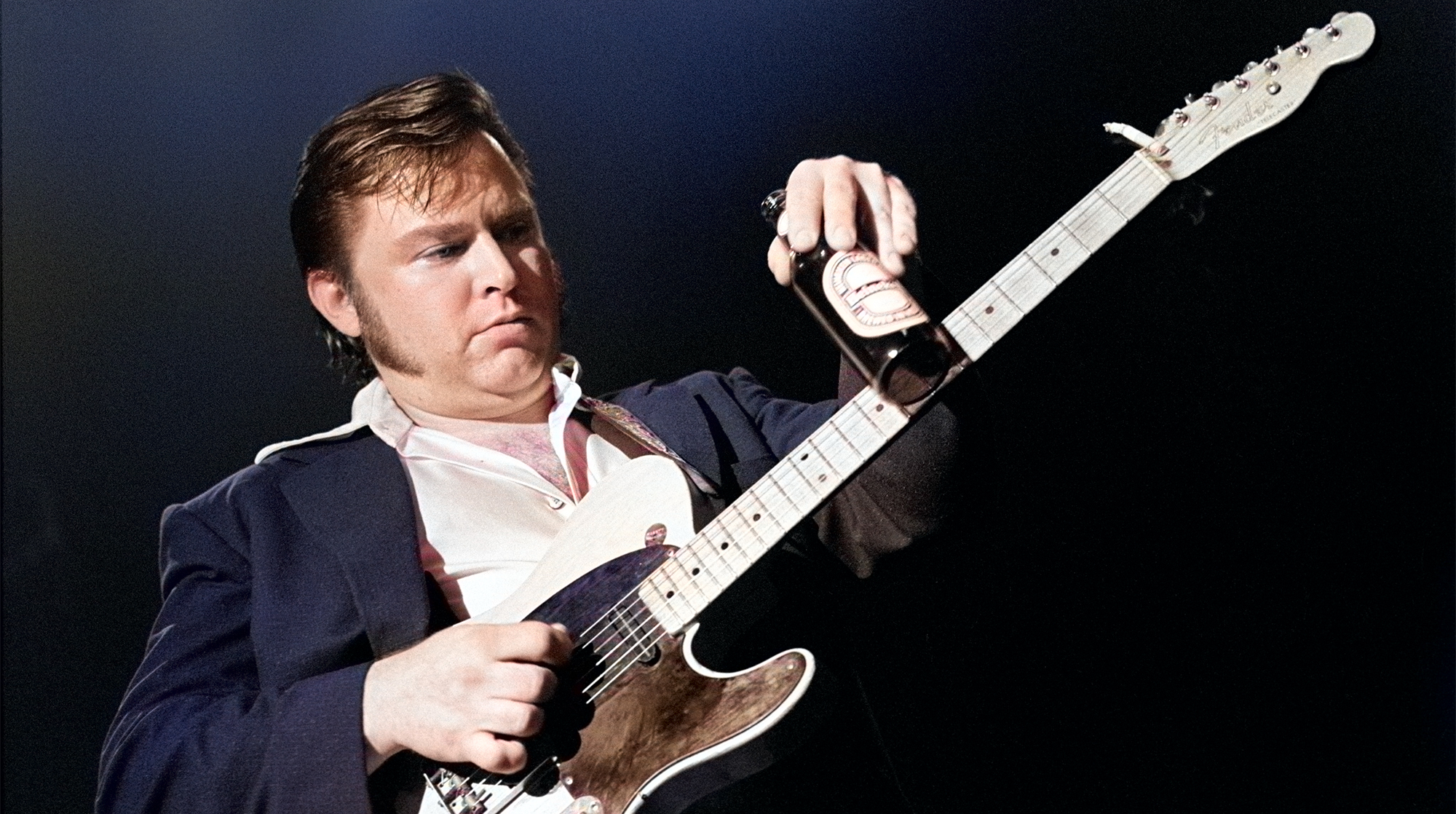
Guitarists spend so much time learning to play the right notes, they often forget how cool wrong notes can sound.
The truth is, being able to inject flurries of random pitches into your playing is great for generating edgy, unruly riffs or trippy “out”-sounding solos. The trick is to unlearn all the scales, chords and melodies you’ve worked so hard to burn into your fingers.
Don’t be intimidated by the army of accidentals in FIGURE 1. This entropic descent is easier to grasp than its notation would suggest. In fact, by beat three you should see a pattern of orderly diagonal lines emerging. But while it looks tidy to your eyes, this pattern delivers pure melodic chaos to your ears. Pickers can use alternating strokes, and fingerstyle players will find this wild lick surprisingly right-hand friendly. Move on to FIGURE 2 to learn the same pattern ascending.
FIGURE 1

FIGURE 2

The next step is finding creative ways to use this grip of notes. One way is to transplant FIGURE 2’s hectic opening gesture to others strings, as in FIGURE 3. During a vamp in A minor, throw in these notes for an attention-getting sonic splash.
FIGURE 3
All the latest guitar news, interviews, lessons, reviews, deals and more, direct to your inbox!

For a descending flavor, try FIGURE 4. This rambunctious gang of eighth notes happens to work well over a swinging II-V-I progression in C minor.
FIGURE 4

Finally, try inverting the pattern. Like a mirror image of FIGURE 1’s initial descent, the “diagonals” in FIGURE 5 go the opposite way—from low frets to high frets. Melodically, this lick sounds like you tumbled down a flight of stairs and miraculously landed on your feet,
FIGURE 5

Typically, fretboard patterns result in mechanized runs that sound more like practice routines than music. But when harmonic disarray is your goal, the right pattern, ironically, will work surprisingly well.

Whether he’s interviewing great guitarists for Guitar Player magazine or on his respected podcast, No Guitar Is Safe – “The guitar show where guitar heroes plug in” – Jude Gold has been a passionate guitar journalist since 2001, when he became a full-time Guitar Player staff editor. In 2012, Jude became lead guitarist for iconic rock band Jefferson Starship, yet still has, in his role as Los Angeles Editor, continued to contribute regularly to all things Guitar Player. Watch Jude play guitar here.
